3 Colonial North America

The first European nations to establish themselves in the Americas in the sixteenth century were Spain and Portugal. Between the 1490s, when exploratory missions began in earnest, and 1588, when the Spanish Armada was defeated by the English navy, the Iberians ruled the Atlantic. As already discussed, Christopher Columbus was working for the Spanish when he established the first Euro-American settlement since the Vikings at La Navidad in 1492. His brother Bartolomeo founded Santo Domingo, also on Hispaniola, in 1496. In 1500, settlements were begun at Nuevo Cádiz and Santa Cruz, in what is now Venezuela. Hernán Cortés landed at Veracruz in 1519 and began his conquest of the Aztec Empire, and Francisco Pizarro crossed the Andes to take on the Incas in 1532. Although the conquistadors didn’t understand the causes of the epidemics that decimated native populations, they had a strong belief in their own prowess and in their divine mandate. Portugal explored Newfoundland and Labrador (which is actually named after Portuguese explorer João Fernandes Lavrador), as well as Brazil, where they gained a permanent foothold. In 1502, a Portuguese expedition arrived at the bay of Rio de Janiero. Among the crew in this expedition was a Florentine named Amerigo Vespucci, who published his bestseller Mundus Novus in 1504.
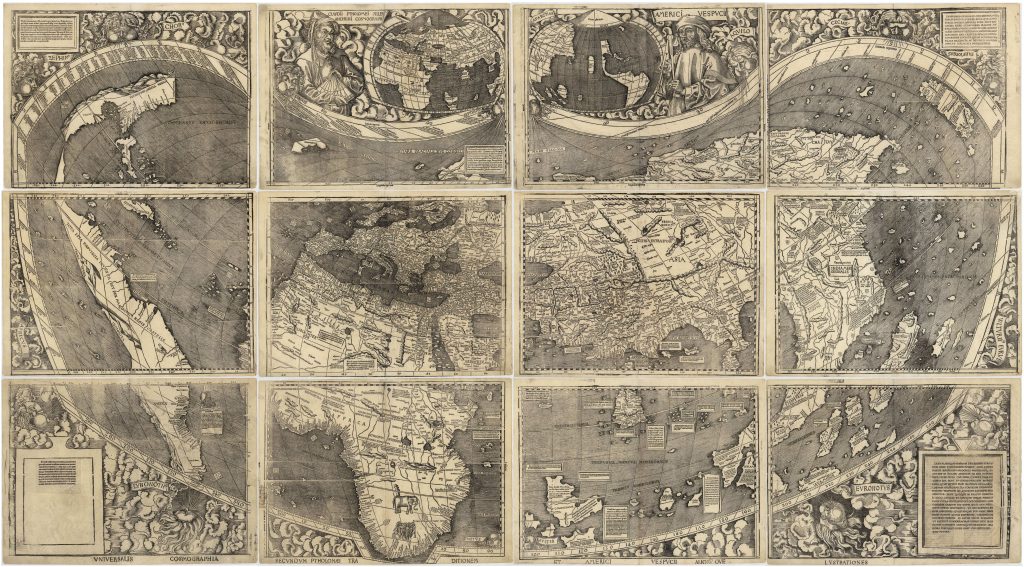
Given the prominence of Italians such as Columbus, Cabot, and Vespucci among the explorers, why were Spain and Portugal first to colonize the new world? It’s true they had sea power; but they also had a license. In 1494, Spanish-born Pope Alexander VI presided over the Treaty of Tordesillas, which divided the western hemisphere between Spain and Portugal. The Pope split the globe at 47.37 west longitude and gave everything west of that line to the Spanish and everything east of it to the Portuguese. As long as Europe remained united under the Catholic Church, people obeyed the Papal edict. The Protestant Reformation began in the first decades of the 1500s, sparking a series of wars between Catholics and Protestants. But it wasn’t until nearly a century later that Protestant European nations became strong and unified enough to look west. The defeat of the Armada in 1588 was a turning point for seagoing Protestants. As soon as they were able, the English and Dutch sent explorers. The Catholic French, who had been left out of the original Papal planetary division, took advantage of the lapse of the Roman decree and did the same.
Although it is reasonable to suspect that European fishermen had been visiting the shores of northern regions near the Grand Bank fisheries for generations to dry their catches of cod and replenish their drinking water for the trip home, the first successful permanent European settlement on the North American coast was St. Augustine, established in 1565 in the Spanish colony of La Florida. The French followed nearly two decades later, building a fort in 1604 at Port Royal in what is now Nova Scotia and establishing Quebec in 1608. The English had tried settling people on Roanoke Island in 1588, but the colony had mysteriously disappeared by the time resupply ships returned to the area a few years later. The settlement may have been overrun by local Indians, but it is also possible that the abandoned colonists went to live with the natives when their food ran out and help failed to arrive from England. Throughout the early history of the English settlement, colonial authorities regularly tried to counter stories of poor English colonists choosing to live with the Indians with frightening tales of captivity and redemption. After losing both their people and their entire capital investment at Roanoke, the English tried settling the Chesapeake Bay region again in 1607. The Virginia Company, a joint stock company chartered by King James I in 1606, sent two expeditions to the explore the coast of North America between the Spanish and French settlements. One established Jamestown forty miles inland on the James River; the other established the unsuccessful Popham Colony on the Kennebec River in Maine.
Between the Virginia Company’s two colonies, the Dutch planted their first settlement at Fort Nassau in 1614, on the Hudson River near Albany, New York. Unlike England, Holland was also very active in South America, capturing a large portion of northern Brazil from the Portuguese and in 1600 conquering the Spanish city of Valdivia, on the remote Pacific coast in what is now southern Chile. Holland and England also competed in the Caribbean. Because the West Indies did not subsequently become part of the United States, the history of the Caribbean region is often left out of American history books. As we will see, this lapse is unfortunate. Trade with fellow Englishmen on islands such as Barbados, established in 1627, was a key to the survival of British colonies on the North American mainland.
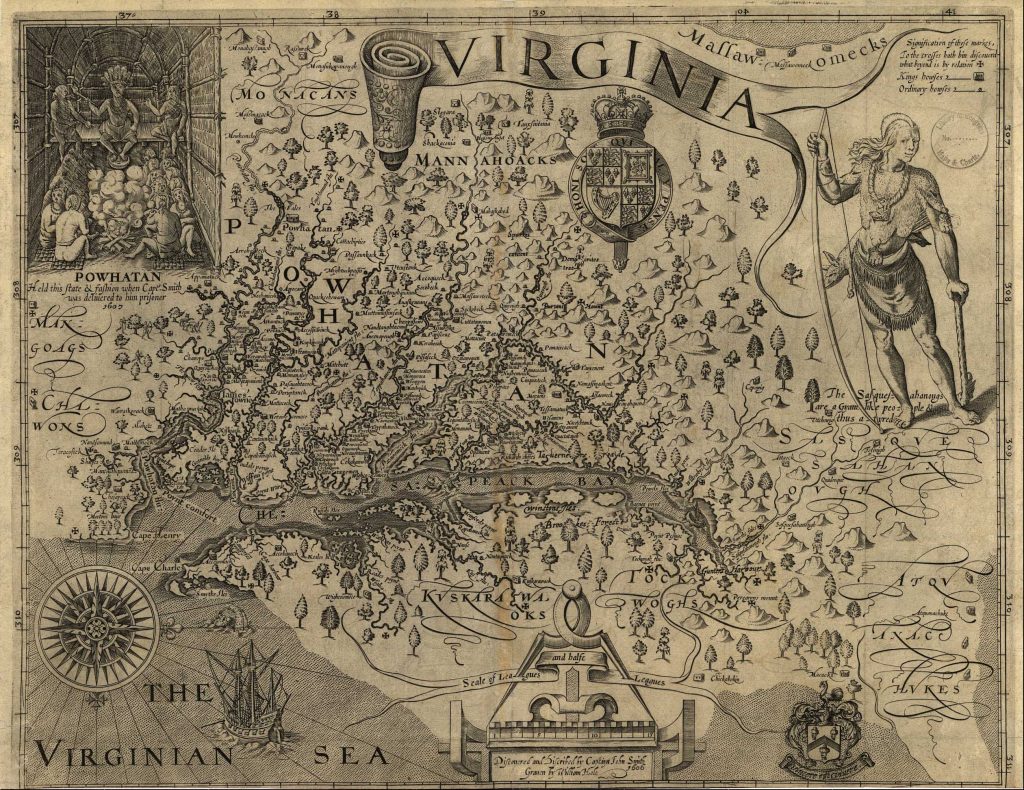
Virginia and New England
The coastline where the Chesapeake expedition of the Virginia Company first landed was already occupied. Although disease in the century since first contact with Europeans had reduced populations in coastal North America (as shown in Charles C. Mann’s brief video included in the previous chapter), Indians lived in villages fortified with high palisade walls. To avoid direct confrontation, the English chose an unoccupied piece of swampy ground upriver that the Indians had shunned. Jamestown was plagued with mosquitoes and other pests, but at least the natives didn’t attack immediately. This was lucky, because the Virginia Company had sent a party consisting almost entirely of gentlemen. There were few soldiers and no farmers or tradesmen in the first settlement, since the English had expected to become rich trading with the natives. Even when they discovered there was no easy treasure to acquire, the Jamestown colonists still showed no interest in farming. As a result of their lack of preparation and stubbornness, 82 of the original 120 colonists died in the first nine months.
The English always remained acutely aware of the native presence, however. Indians are prominent on the 1624 map above, which labels the land upriver as Powhatan territory and includes an illustration of Chief Powhatan sitting in his long-house and a formidable-looking Indian warrior. Powhatan commanded an effective army, which went to war with the colonists from 1610 to 1614. The chief’s brother Opechancanough led in two wars against the English colony after the Powhatan’s death in 1618. Chief Powhatan’s daughter Pocahontas, whose marriage to Englishman John Rolfe had guaranteed the peace between the Indians and English, had died of disease a year earlier in London. Opechancanough’s first war began in March 1622 when the Indians struck without warning, killing one third of the English settlers. The Indians, who lived in settlements that shifted with the seasons, apparently expected their opponents to move their colony to a new region, but this was not consistent with European ideas about land tenure. The colonists raided Indian settlements and burned native cornfields every summer for the next ten years and completed a six-mile long palisade in 1634 to protect the Virginia Peninsula. A peace treaty was negotiated in 1632, but a third Powhatan war broke out in 1644 which ended only when the 92-year old chief, Opechancanough, was captured and assassinated in Jamestown.

Although they had originally been aiming for the Carolinas, the Pilgrims arrived on Cape Cod in November 1620. Our Thanksgiving traditions memorialize the fact that the Pilgrims were unprepared for the severe climate they encountered, and nearly didn’t make it through their first winter. But the stories don’t always explain why the Pilgrims were so surprised by the frigid conditions of their new home. Part of their confusion was caused by popular reports such as Captain John Smith‘s bestseller, The Generall Historie of Virginia, New England, and the Summer Isles, which enthusiastically described the region as temperate and bursting with abundant sources of food available with little effort. The New England coastline where the English, French, and Dutch landed was at the same latitude as Southern Spain, and the British colonies in Virginia were at the same latitudes as North Africa. Seventeenth-century Europeans, unaware that warm ocean currents were responsible for the temperate conditions they enjoyed on the northeastern edges of Europe, mistakenly believed that latitude determined climate. This misconception continued until the 1770s, when Benjamin Franklin’s Chart of the Gulf Stream (above) was first published in Europe and the American colonies. Note that Franklin includes the locations of George’s Bank and the Grand Banks on his map. These fishing grounds remained of vital interest to both Americans and Europeans, and were actually mentioned in the treaties that concluded the Seven Years (French and Indian) War and the American Revolution.
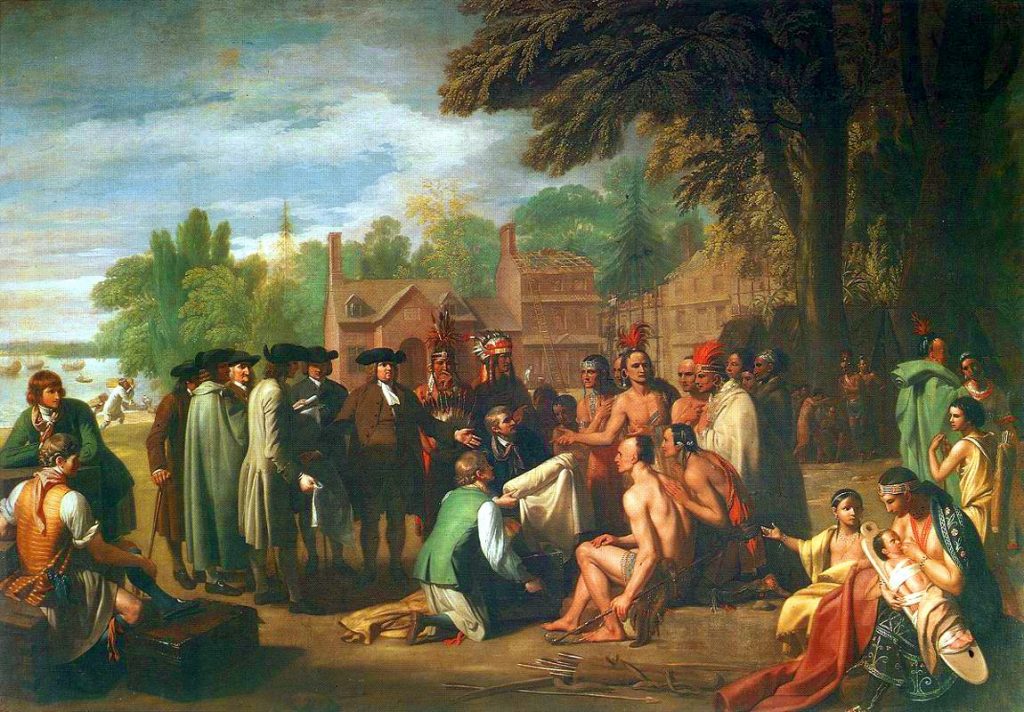
The Puritans received a royal charter to establish a separate Massachusetts Bay Colony, and founded Boston in 1630. Between these two well-remembered dates, Peter Minuit established the Dutch colony of New Amsterdam in 1626 by purchasing Manhattan from Lenape natives who did not own or even actually live on the island. According to tradition, Minuit paid the Lenape with a trunk of trade goods said to be worth 60 guilders, or $26 in modern money. While the facts of this story are probably true, calling this transaction a purchase ignores important cultural differences that affected the ways the parties understood the sale. Indian ideas of land ownership were much more fluid than those of the Europeans, and they probably perceived the trunk of goods as a symbolic gift rather than as a purchase payment. This type of misunderstanding recurred frequently and led to land disputes throughout early American history. William Penn is similarly remembered as purchasing the land that became Pennsylvania from the Lenape people who lived there, although in fact Penn traced his ownership of a tract of land including the entire state of Pennsylvania and most of Delaware to a personal grant from King Charles II, in repayment of political and financial debts the king owed Penn’s father. The territory of New Amsterdam claimed by Holland was ceded to British control in 1674 and renamed New York after King Charles II’s younger brother, who was known as the Duke of York until he became King James II of England. In the image of the 1660 Dutch town below, a windmill is visible just above the battery fortress. A canal extends toward the city wall that became Wall Street on the right, with pastures and farms expanding northward beyond it.
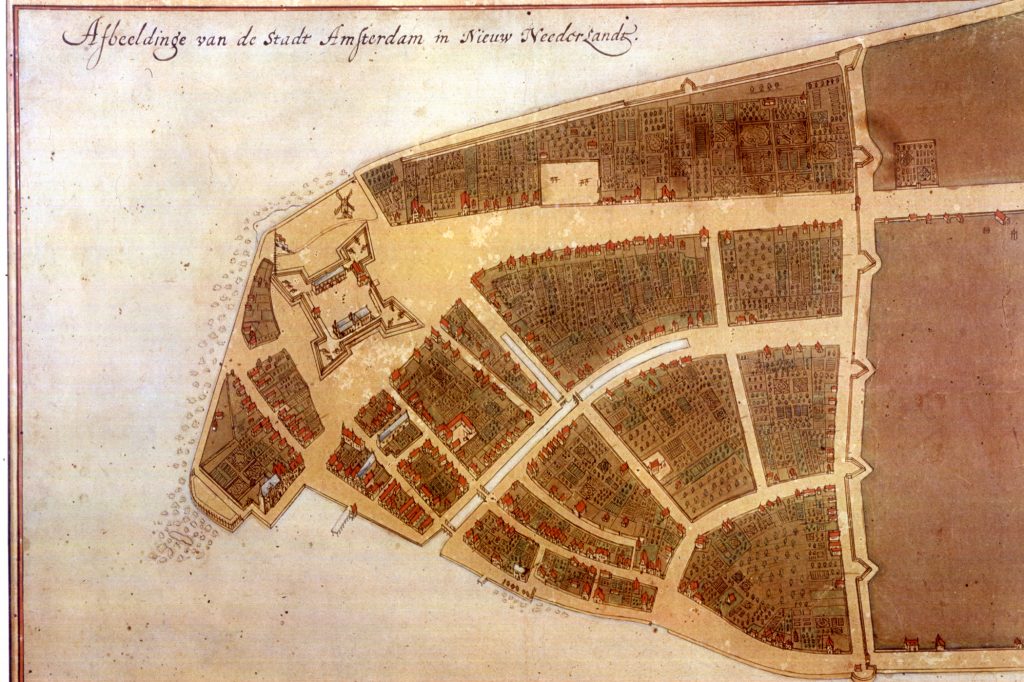
Due to the long delay between the initial exploration of the Americas by the Spanish in the late 1400s and early 1500s and the establishment of English colonies in North American, English settlers sometimes brought back to America plants and animals they didn’t realize were actually from the Americas. For example, when Scotch-Irish farmers were recruited to settle the New England frontier, they brought with them the seed potatoes (originally an Andean staple crop) that became a commercial crop in Maine. Turkeys, carried to Europe by Columbus and bred into varieties such as the “Black Spanish”, were reintroduced in the English colonies a century later and crossed with wild native birds, resulting in a range of heritage breeds leading to the commercial turkeys of today. Europeans also discovered valuable North American species such as the beaver which became an important item of trade, especially in New France. Beaver felt was used to make hats for fashionable Europeans, and control of the beaver’s habitat became an important element in territorial negotiations between the European nations claiming the New World.
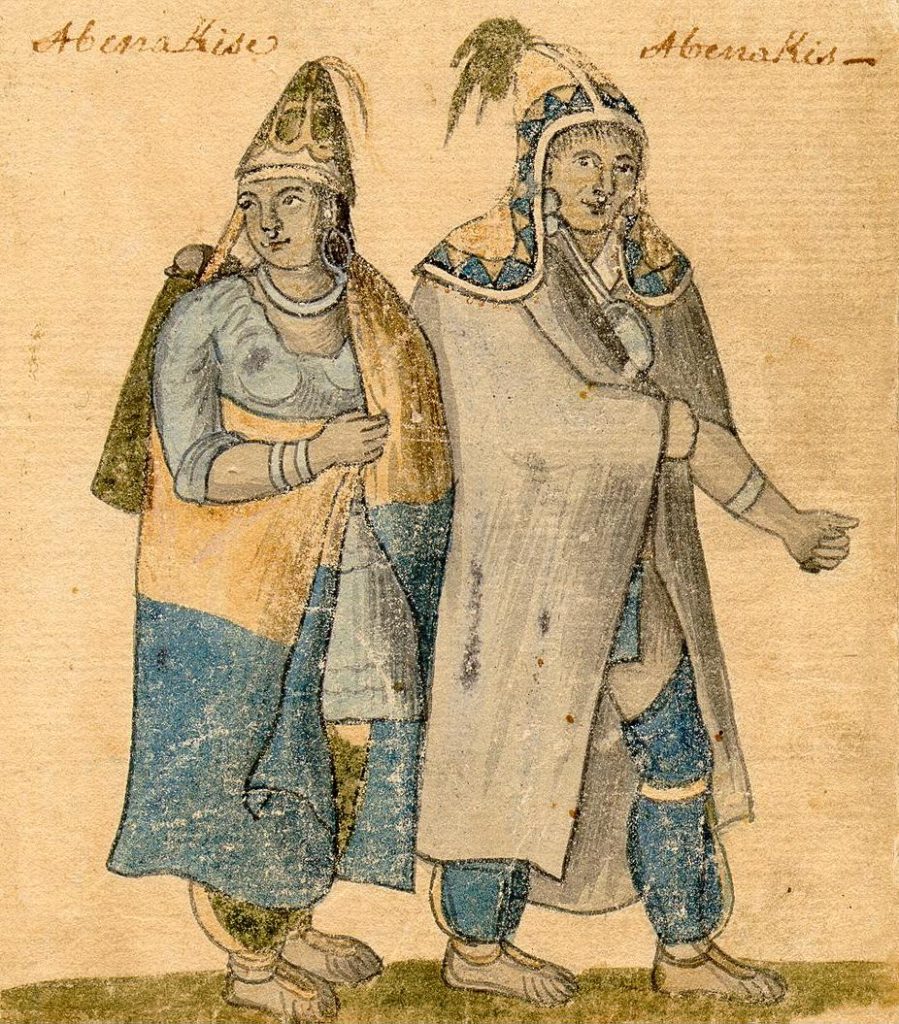
Although they were delayed by events in Europe and began establishing serious colonies nearly a century after the Spanish and Portuguese, late arrival often worked to the North American colonists’ advantage. In many cases, colonists found abandoned settlements, open fields waiting for their farmers, and park-like forests filled with game for their hunters. Disease, which had traveled much more quickly through the densely populated south, had finally struck in the north. Native populations in the coastal northeast were devastated by an epidemic that raged from 1617 to 1619, killing 95 percent of the Abenaki people and over 90 percent of the Massachusetts tribe. This emptying of the land was seen by English settlers as a gift of divine providence. Puritan minister Cotton Mather wrote that “The Indians of these parts had newly…been visited with such a prodigious Pestilence; as carried away not a Tenth, but Nine Parts of Ten (yea, ‘tis said Nineteen of Twenty) among them…So that the Woods were almost cleared of those pernicious Creatures, to make Room for better Growth” (Magnalia Christi Americana, 1702). English colonists had not deliberately wiped out the natives, but they were quick to take advantage of the open land and social chaos caused by the ongoing Columbian exchange.
Not only were populations decimated and cultures thrown into chaos, but political and military balances were upset throughout the area of European settlement. For example, Squanto, the good Indian of our Thanksgiving tradition, was a member of the Patuxet tribe who had been kidnapped as a child by an English captain and sold into slavery in Spain. Squanto escaped and after many years made his way back to his homeland, only to find that his entire village had been wiped out by disease and that a new English village, Plymouth, had been erected on its ruins. Squanto’s family and all his allies were dead, leaving him without a home and without support against his village’s traditional enemies. Squanto, who had learned to speak English while a slave in Europe, allied himself with the Pilgrims and helped them survive their first winter partly because he had nowhere else to go. We shouldn’t underestimate the social chaos caused by the deaths of more than nine out of ten people in the native world, especially when we’re trying to understand why Indians reacted as they did to European colonists.
Land Management
Native Americans had lived in the areas Europeans colonized for about 11,000 years, since the glacier covering New England and the Great Lakes had retreated at the end of the last ice age. The natives had techniques and traditions that some Europeans studied closely. But for many settlers, Indian practices seemed strange and uncivilized. One reason Europeans misunderstood Native culture was that it was very different from European culture, especially in the way the Americans used the land and its resources. Unlike the urban empires the Spanish had found in Central and South America, many North American Indians lived in small, mobile communities. In what became the mid-Atlantic colonies and southern New England, natives didn’t build cities. They moved with the seasons, from winter hunting grounds where they lived in single-family wigwams to summer farmlands where they occupied communal long-houses. In the spring, when fish species like shad and alewife were running upstream to their spawning grounds, coastal natives congregated around streams and rivers. From October to March, Indian men went into the deep forest to hunt beaver, caribou, moose, deer, and bear. The natives had no livestock, since most of the large mammals of North America had disappeared in the Holocene Extinction, leaving no species susceptible to domestication. So women gardened while men hunted and fished.
The crops Native American women cultivated are called the three sisters. Maize was planted in hills rather than rows. Beans planted around the maize plants climbed the cornstalks and their roots converted nitrogen from the air, enriching the soil. Squash or pumpkins planted between the hills shaded the soil and held back weeds. These intensively gardened plots were called tangles, and they produced remarkably high yields per acre. After a year or two of gardening in one location, native women would shift their plantings to another field, allowing soil fertility to recover naturally.
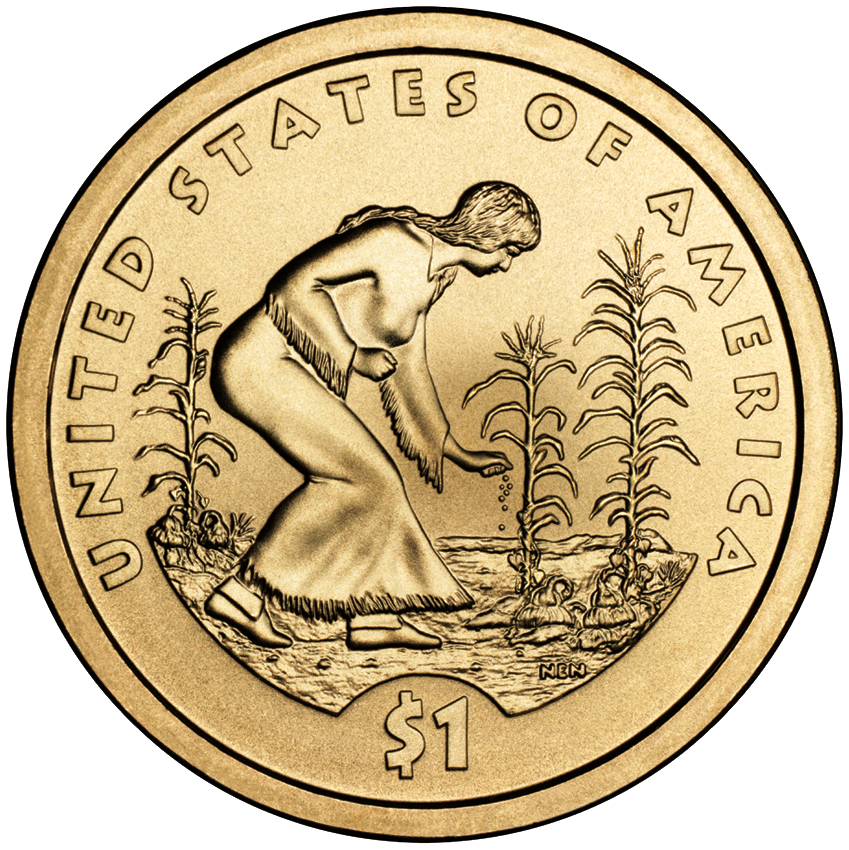
In the forests, North American natives regularly burned the understory to encourage new growth. Fire kept the forests open and created what ecologists call the edge effect, attracting game animals and boosting their numbers by providing abundant food. The hunters’ paradise Europeans wrote so frequently about in promotional tracts to lure investors and settlers to the new world was neither a providential accident nor a natural feature of the land. Instead it was the result of deliberate native land and game management. But because most European settlers did not understand the ecology of their new home or native practices, many colonists believed Indian men were lazy and expected their women to support them. Indians, for their part, did not understand why Englishmen (who had been raised in a culture where hunting was a luxury sport practiced on enclosed reserves, not accessible to and often illegal for non-aristocrats) were unable let their wives manage the gardens and help support their families hunting the plentiful game the Indians managed in America’s woodlands and rivers.
It has long been known that Indians used fire to clear land and to burn the understory of the forest. But historians have only recently begun to appreciate the vast extent of Indian burning. Great expanses of the eastern seaboard were cleared for farming and game management by annual burns. Fire kept forests open and encouraged the growth of foods preferred by wildlife, creating the park-like woodlands so admired by European settlers. Indians had practiced controlled burning for centuries, until eastern forests became full of fire-loving tree species like the slash pine, whose cones only open and release seeds when they are exposed to flames. Some scientists have even recently suggested that the Little Ice Age, which reached its coldest temperatures in the sixteenth and seventeenth centuries, may have been exacerbated by the destruction of the Indian cultures that had burned the Americas for so long. The abrupt end of Indian burning practices and the rapid regrowth of American forests removed so much carbon from the atmosphere that scientists now believe the elimination of Indian populations caused by the Columbian Exchange may have helped trigger a period of global cooling.
The mobile culture and land use traditions of Native Americans were so different from the lifestyles the settlers had known in Europe, that many colonists failed to notice that the Indians knew what they were doing until it was too late. By the early 1800s, coastal Indians had mostly disappeared due to disease and war, and forests had reverted to a more “natural” state that had been unknown during the centuries of Indian land management. Descendants of English settlers lamented that turkeys, deer, and other animals that had provided so much free meat for their ancestors were gone from the woods. The English had not hunted these species to extinction. There were simply no Indians managing the land to provide the high levels of food the abundant wildlife had depended on. In a famous account of his travels through New England, Yale president Timothy Dwight regretfully observed, “Hunting with us exists chiefly in the tales of other times.”
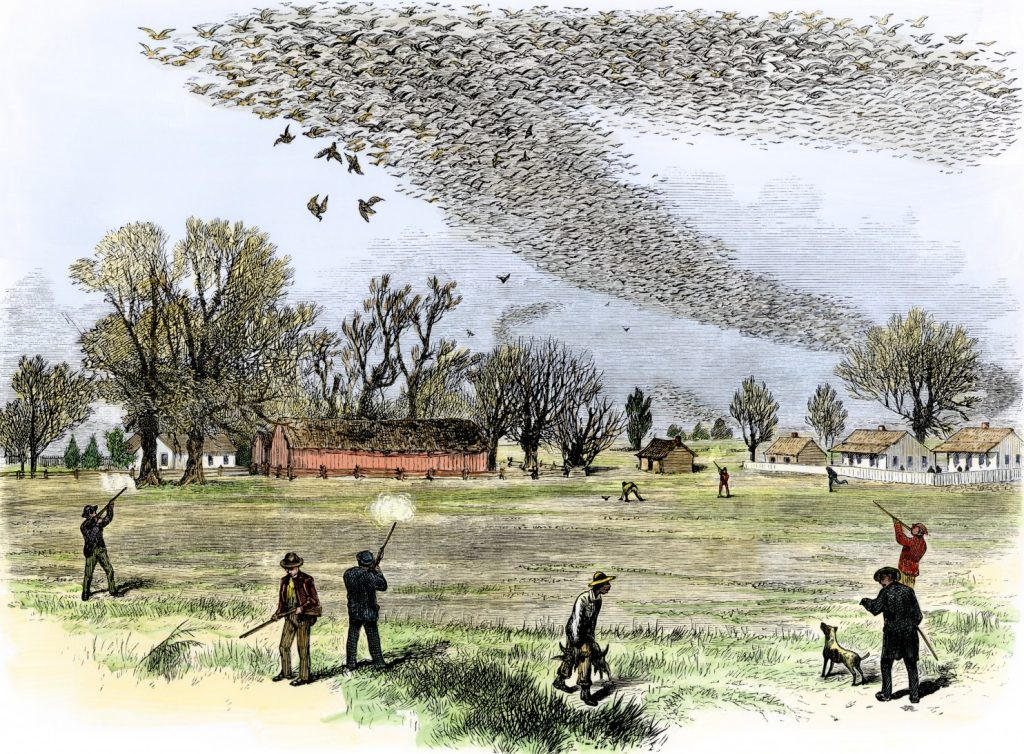
Although most game species declined because Indians were no longer managing the land to support them, some species such as the passenger pigeon were actually hunted to extinction. However, the story of the passenger pigeon is more complicated than that description might suggest. Native to the northeastern region of the continent, pigeon populations that the Indians had prevented from expanding had exploded when there were no longer Indians managing the land, until the birds lived in flocks of several million. Opportunistic passenger pigeons took advantage of the abundant food sources like acorns left by Indian land management, once the Indians were no longer present to protect these resources and use the landscapes they had created. One flock, seen flying in the mid-nineteenth century in southern Ontario, measured a mile wide and three hundred miles long. The pigeons took fourteen hours to pass the people observing them. Passenger pigeons were shot and trapped throughout the seventeenth, eighteenth and nineteenth centuries, and as cities grew their habitats shrank. The last passenger pigeon, named Martha, died on September 1st, 1914.
The offshore cod fisheries, which had supported countless generations of Native Americans and Europeans, were also harvested to near extinction. Cod had dependably provided hundreds of thousands of tons of food each year for centuries, until severe overfishing at the end of the twentieth century caused a population collapse the species has not yet recovered from, and perhaps never will.

Another European misconception about Native Americans, often perpetuated in histories and contemporary traditions, was that Indians had no concept of ownership. Ironically, this belief is the reverse of the idea that Indians shared European concepts of property and payment which was used to justify the purchase of Manhattan and countless other parcels of Indian land. Both misconceptions spring from a mistaken attempt to fit Indian concepts into a format that makes sense based on Euro-American cultural assumptions, and both are inaccurate. Native cultures developed in response to experiences in the Americas that were quite different from those that had shaped European culture. Indians had different traditions about common use and private ownership, and their ideas about land use represented a relationship with the environment that Europeans misunderstood. When native people sold parcels of land to Europeans, for example, the earliest contracts and deeds usually specified that the sellers retained “usufruct” or usage rights to hunt and fish on the land, and even sometimes to set up temporary settlements as they moved across the region from season to season. Later, as the balance of power became less equal and shifted to favor Euro-Americans, the language of land contracts changed to reflect European ideas of ownership. As the Euro-American population grew, even where earlier contracts had preserved their usage rights, Indians were often prevented from exercising them. Natives also had a different concept of money and its role in social relations than their neighbors did. Living in a mobile culture that avoided encumbering possessions and valued reciprocity, Indians used wampum and trade goods not as mediums of exchange or symbols of wealth, but as ceremonial gifts to be given at feasts and gatherings to demonstrate and celebrate social relationships.
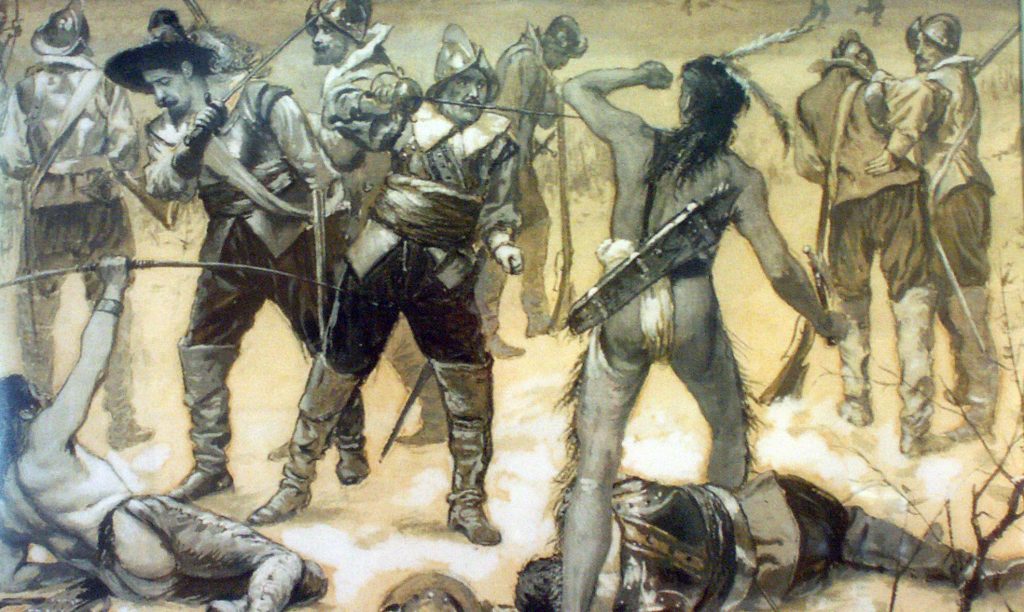
Although many individual settlers probably tried to deal fairly with their Indian neighbors, the difference between European and native ideas of ownership and the rapid growth of the colonies made conflict virtually inevitable. Natives regularly moved to new locations as the seasons changed. They gardened in shifting fields. Colonists built houses and permanent villages, and fenced their fields. But although they claimed complete ownership of the parcels they occupied, the colonists let their cattle and pigs run loose over the countryside. Since the natives were not protecting their lands in ways the colonists recognized, such as with fences, the Euro-Americans believed (or at least argued) Indians had no idea of land ownership. The colonists were unaware that native practices had been created for a world without domestic livestock. When Indians treated European livestock like wildlife and shot a wandering cow, or when they killed pigs eating their un-fenced crops, the colonists demanded compensation for the destruction of their property. And of course, more colonists arrived every year. The Powhatan wars in Virginia (1610-46), the Pequot War in Connecticut (1637), the Dutch-Indian War in the Hudson Valley (1643), and the Beaver Wars (1650) all ended badly for the natives. Even King Philip’s War (1675), which is remembered as a disastrous, nearly-successful uprising by Massasoit’s son Metacomet, who had finally decided enough was enough, resulted in five times as many native deaths as European. By the conclusion of the French and Indian War (1756-63), northeastern natives were no longer a threat to European colonies.
Commerce
Although our histories traditionally portray the North American colonies as havens for freedom-seeking religious dissenters like the Pilgrims, Puritans, and Quakers, it is important to remember that the European interest in the Americas was always commercial. South American gold and silver enriched the treasuries of Spain and its trade partners. Caribbean sugar plantations were established by Portuguese and Dutch entrepreneurs and later taken over by Englishmen. American commodities such as tobacco, beaver pelts, and cod enriched merchants and investors on both sides of the Atlantic. Boosters of American colonization and investment insisted that the new continents were filled with natural wealth just waiting to be exploited. And if a resource was scarce in Europe, that scarcity added to its value in America. American wildlife like beavers and even American trees commanded high prices in crowded European nations that had long ago cut down most of their own forests and killed most of their game. The British Navy marked all the tall pines of northern New England with “The King’s Arrow” because there were no longer trees available in Europe tall enough to make masts. It was illegal to cut the King’s trees, and according to New England folklore there are still some old trees deep in the Maine woods with the royal arrow dimly visible on their trunks.
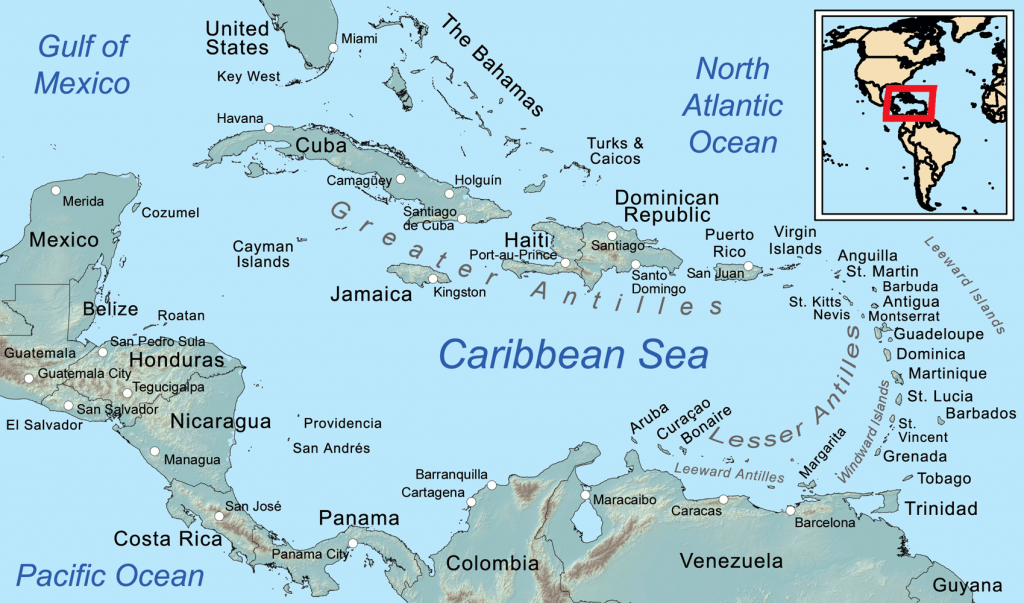
American colonists’ hopes and expectations for the new world included not only a place to build a new society, but a place where they could get rich. Even religious idealists such as the Pilgrims looked forward to opportunities for social mobility that had not been available to them in England. And right from the start, European colonies in North America were commercial. In addition to fishing, growing tobacco, and trapping beaver, the North American colonies benefited from the booming sugar economy of the Caribbean. Islands such as Barbados that had once been self-sufficient had begun by the mid-1600s to specialize in the highly profitable commodity at the expense of all other crops, so sugar planters looked to their neighbor colonies for food supplies. John Winthrop, the Puritan leader who helped establish Boston and who was Governor of the Massachusetts Bay Colony four times before 1650, sent his second son Henry to help establish Barbados in 1626. When Oliver Cromwell’s Civil War halted the flow of commercial shipping between England and the ten-year-old Bay Colony in 1640, trade with the West Indies saved Boston’s economy. Governor Winthrop’s younger son Samuel joined the growing community of New England merchants in the Caribbean sugar islands in 1647.
In the South, cultivation of the Virginia colony’s main cash crop tobacco for the European market required large amounts of inexpensive labor. At first, many of the workers used by tobacco planters were poor English men and women who had come to the colonies (sometimes willingly, sometimes not) as indentured servants. Later, when the supply of British workers was cut off by the English Civil War and then by the American Revolution, Southern planters began to rely on enslaved Africans, who were already being used on West Indies sugar plantations, to do the work. It is important to remember that the use of slave labor on tobacco, sugar, and later on cotton plantations was not an inevitable requirement of the commodity being grown, but an economic decision planters made based on their desire to produce large quantities at low costs for commercial markets. Although ultimately the argument over slavery in the United States became largely a clash of cultures between a paternalistic Southern aristocracy and a Northern commercial class committed to capitalism and wage labor, at their heart the decisions planters made to use slave labor were based not on environmental factors, but on profit-maximizing economic choices.

Europeans settling in North America not only brought ideas about the environment developed in their home countries, they brought a commitment to commodity export markets that helped shape their social and political structures and their ideas about the land they found. The North American landscapes that became English colonies had been carefully managed for centuries by the Indians living on them. The disappearance of the Indians and establishment of the colonies rearranged these landscapes in the image of the old world. Traditions and practices that had sustained native populations for thousands of years were lost when disease and war destroyed Indian cultures. It’s interesting to speculate whether those practices would have been abandoned anyway, because the natives’ mobile lifestyle was incompatible with the commerce and growth required by the rapidly expanding English colonies, or whether colonists encountering a more active, ongoing display of Indian land management might have made different choices for the American landscape.
https://youtu.be/Q0ORJ4ilaF4
Further Reading
Colin G. Calloway, New Worlds for All: Indians, Europeans, and the Remaking of Early America. 2013.
William Cronon, Changes in the Land: Indians, Colonists, and the Ecology of New England. 1983.
Matthew Parker, The Sugar Barons: Family, Corruption, Empire, and War in the West Indies. 2012.
Media Attributions
- The_First_Thanksgiving_cph.3g04961 © Jean Leon Gerome Ferris is licensed under a Public Domain license
- Waldseemuller_map_2 © Martin Waldseemüller is licensed under a Public Domain license
- Capt_John_Smith’s_map_of_Virginia_1624 © Captain John Smith is licensed under a Public Domain license
- Franklingulfstream © Benjamin Franklin is licensed under a Public Domain license
- Treaty_of_Penn_with_Indians_by_Benjamin_West © Benjamin West is licensed under a Public Domain license
- CastelloPlanOriginal © Jacques Cortelyou is licensed under a Public Domain license
- Abenakis is licensed under a Public Domain license
- 2009NativeAmericanRev © United States Mint is licensed under a Public Domain license
- Passenger_pigeon_shoot © Smith Bennett is licensed under a Public Domain license
- Surexploitation_morue_surpêcheEn © Lamiot is licensed under a CC BY-SA (Attribution ShareAlike) license
- Lion Gardiner © Charles Stanley Reinhart is licensed under a Public Domain license
- Caribbean_general_map © Kmusser is licensed under a CC BY-SA (Attribution ShareAlike) license
- 1670_virginia_tobacco_slaves is licensed under a Public Domain license

